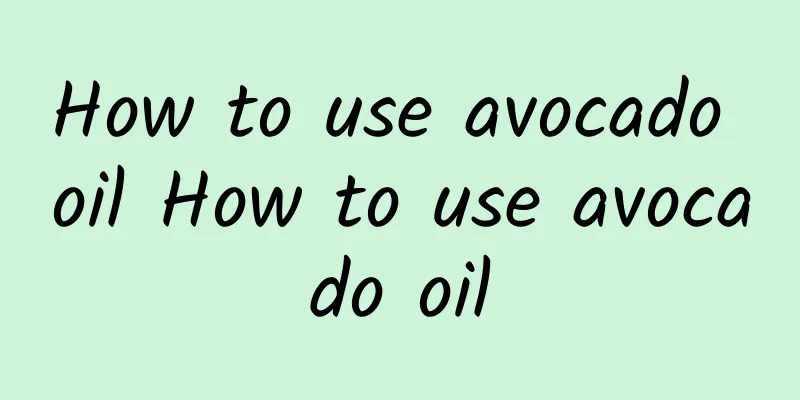The reasons and solutions for the yellowing of Phoenix bamboo leaves

|
Everyone likes Phoenix Bamboo. Planting Phoenix Bamboo is to bring Feng Shui and wealth to the home. The cultivation method of Phoenix Bamboo needs to be treated with caution. What should we do if we find that the leaves of Phoenix Bamboo turn yellow during the planting process? Let's talk about the cultivation information of Phoenix Bamboo. The reasons and solutions for the yellowing of Phoenix bamboo leaves(1) Excessive watering and long-term over-humidification of the soil in the pot will cause lack of oxygen in the soil, causing some fibrous roots to rot, hindering normal breathing and absorption of water and nutrients, and causing the leaves to turn yellow and fall off. After being affected, the young leaves will first turn light yellow, and then the old leaves will gradually turn yellow. You should immediately control watering, stop fertilizing, and loosen the soil frequently to ensure good soil ventilation. (2) Drought and dehydration. If you forget to water your flowers or water them only halfway for a long time (i.e. the top is wet and the bottom is dry), it will affect nutrient absorption and easily cause the leaves to become dull and lusterless, and the leaves to wilt and droop. First, the old leaves at the bottom will age, and then gradually turn yellow and fall off from the bottom to the top. At this time, you need to water them in small amounts and spray them with water to allow them to gradually recover before returning to normal watering. (3) Long-term lack of fertilizer. If ammonia fertilizer is not applied or the pot and soil are not changed for a long time, the soil lacks nitrogen and other nutrients, resulting in weak branches and leaves, thin and yellow leaves. It is necessary to change the pot in time, replace it with new loose and fertile culture soil, and gradually apply thin and decomposed liquid fertilizer or compound flower fertilizer. (4) Excessive fertilization. If too much fertilizer is applied, the new leaves will become thick and uneven, and the old leaves will become dry, brown and fall off. Stop fertilizing immediately, increase the amount of watering, so that the fertilizer flows out from the drainage holes at the bottom of the pot, or immediately turn the pot upside down, rinse the soil with water and then replant it. (5) High temperatures. If flowers that prefer cool weather (such as cyclamen, fuchsia, and begonia) are placed in a hot place and exposed to strong sunlight in summer, it is very easy to cause the tips and edges of young leaves to dry out, or the leaves to turn yellow and fall off. They need to be moved to a well-ventilated, cool place in time. (6) Excessive shading. If flowers that like sunlight are placed in the shade or in places with insufficient light for a long time, their branches and leaves will grow too long, their leaves will become thin and yellow, and they will not bloom or will bloom very rarely. Be sure to move the flower pot to a sunny place. (7) Alkaline soil and water. In most areas of the north, the soil and water contain a lot of salt and alkali. Planting flowers that prefer acidic soil, such as azalea, camellia, jasmine, gardenia, orchid, white orchid, osmanthus, etc., will cause the leaves to gradually turn yellow due to the lack of soluble iron and other elements that can be absorbed by them in the soil. Acidic soil should be selected for planting, and alum fertilizer should be applied frequently during the growth period. (8) Tight and poor ventilation. If too much nitrogen fertilizer is applied, the branches and leaves will grow too luxuriantly, and if they are not pruned for a long time, the inner branches and leaves will not get enough light, which will easily cause the leaves to turn yellow and fall off. Reasonable fertilization and increased pruning should be used to ensure ventilation and light transmission. (9) Dry air. When the indoor air is too dry, some flowers that prefer a humid environment, such as spider plants and orchids, often have dry leaf tips or scorched leaf edges. You should take measures such as spraying water or covering with plastic film to increase the air humidity. (10) Improper temperature. If the room temperature is too low in winter, flowers that prefer high temperatures are often susceptible to cold damage, which can cause the leaves to turn yellow, and in severe cases, the leaves may wither and die. If the room temperature is too high, the plant's transpiration is excessive, and the root water and nutrients are insufficient, which can also cause the leaves to turn yellow. Please pay attention to adjusting the room temperature in a timely manner. (11) The soil is acidic. The red soil in the south is acidic, and magnesium and other elements are easily lost. Planting flowers and trees that are alkali-tolerant or prefer slightly volatile soil, such as oleander, boxwood, and winter jasmine, often causes the veins of old leaves to lose their green color and turn yellow. You can apply calcium magnesium phosphate fertilizer or spray magnesium sulfate solution. (12) Pests and diseases. Leaf spot diseases caused by fungi and other pathogens can easily cause partial necrosis of leaves, yellow spots or patches, and in severe cases, the entire leaf will turn yellow and fall off. When infected by mosaic virus, yellow-green patches will appear on the leaves. When attacked by scale insects, red spiders, etc., the leaves will turn partially yellow and even turn yellow and fall off. All of these should be sprayed with pesticides in a timely manner. (13) Strong stimulation. Using too high a concentration of pesticides when controlling pests and diseases, or being polluted by toxic gases in the atmosphere, or suddenly watering with cold water when the temperature is high, can easily cause the leaf tips or parts of the leaf surface to turn yellow and dry, or even the entire plant to die. |
<<: Gerbera (Gerbera) cultivation and maintenance methods and techniques
>>: What are the reasons for the yellowing of the leaves of the fortune tree?
Recommend
Tomatoes can whiten, remove spots and fight aging
Tomatoes are not only delicious, but also have hi...
How to eat bitter melon to lose weight How to eat bitter melon to lose weight
We all know that bitter melon can help you lose w...
How to distinguish fresh mangosteen from fresh
This kind of tropical fruit is only found in the ...
Steps to cook steamed yellow croaker with black pepper
The taste of steamed yellow croaker with black bea...
Dietary considerations for gout patients
Gout is often caused by an unbalanced diet. In ad...
How to remove the saltiness of jellyfish? Tips on how to remove the saltiness of jellyfish
Jellyfish is a seafood ingredient that many peopl...
How is Omegle random chat room? Omegle random chat room review and website information
What is Omegle Random Chat Room? Omegle is a popul...
How to make dry pot cauliflower
How do you know how to make dry pot cauliflower? L...
How is Estee Lauder? Estee Lauder reviews and website information
What is the official website of Estee Lauder? Este...
What is TV Guide like? TV Guide reviews and website information
What is TV Guide? TV Guide is a website owned by C...
Huangyan tangerine planting and knowledge introduction
Introduction to Mandarin Orange Citrus is the mos...
Who should not eat ginger in winter?
Winter is a good season to eat ginger. Ginger con...
The efficacy and nutritional value of golden kiwi fruit
The golden kiwi is an imported fruit, also known ...
The efficacy and function of grape flowers The efficacy and function of eating grapes
Flowering and fruiting is the natural law of plan...
What foods should not be eaten when having diarrhea? What foods are suitable to eat when having diarrhea?
What foods should not be eaten when you have diar...









